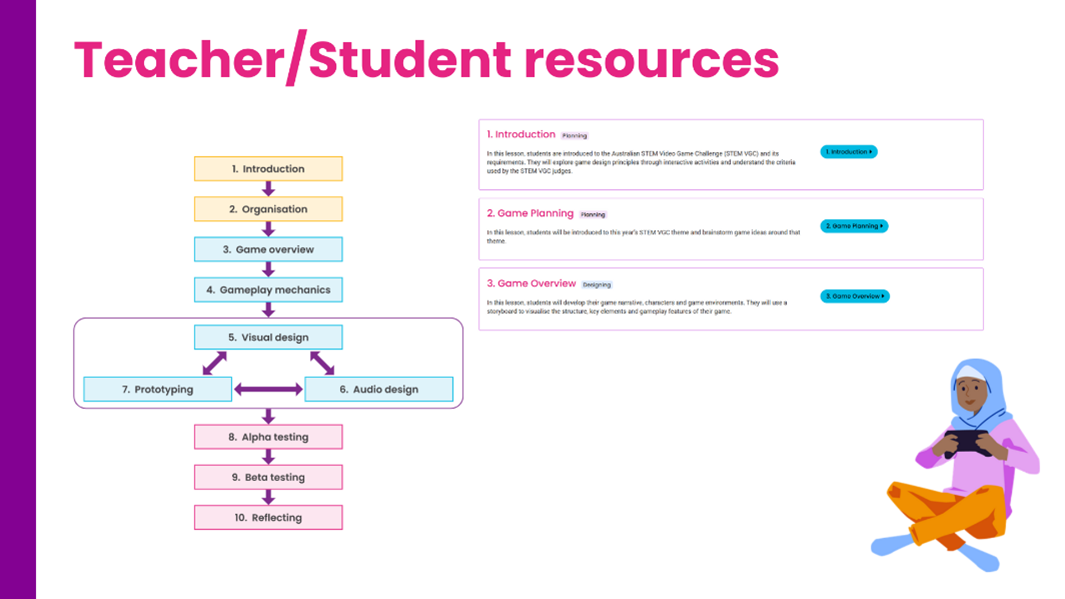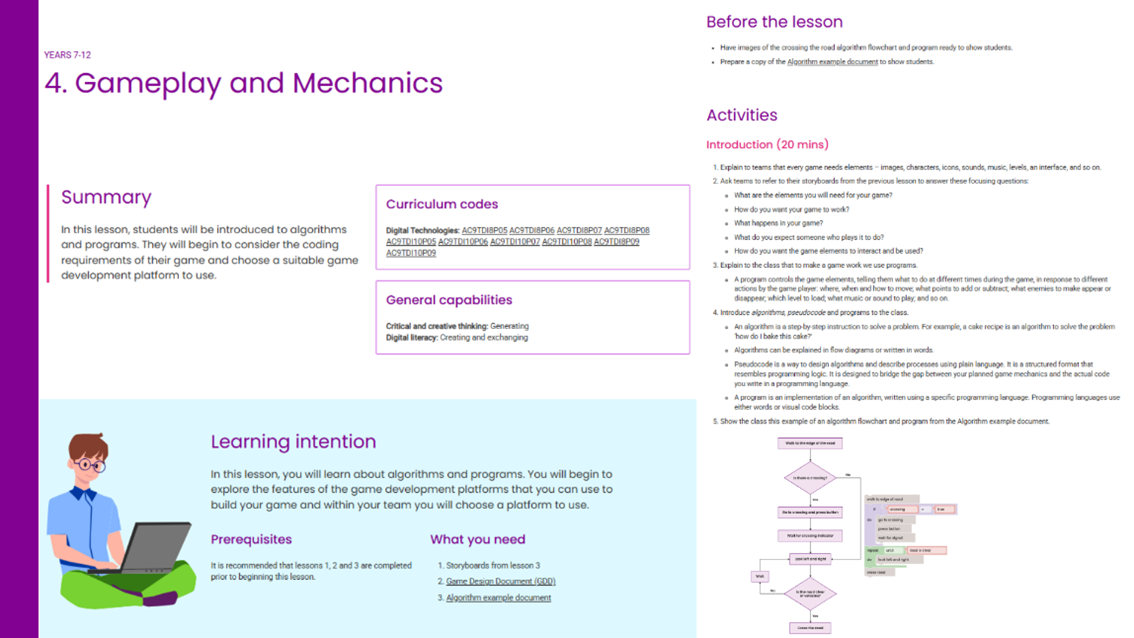
Students level up their skills through video game design
Feature 7 May 2025 7 minute readThe increasingly popular Australian STEM Video Game Challenge (STEM VGC) is proving to be more than just a competition—it's helping students to develop a wide range of skills in STEM.
Now in its 11th year, the free national challenge invites students in Years 3 to 12 to design and build video games, working together as a team. In a recent panel, industry leaders and education experts unpacked how the challenge is inspiring young people, building essential career capabilities, and breaking down stereotypes about gaming in schools.
ACER Research Fellow, Lisa van Beeck, led the discussion with Playside Studios Industry Relations manager, Sorcha Millican-Nagle; Director of Industry Member Relations at the Interactive Games and Entertainment Association (IGEA), Dr Jens Schroeder; and Australian Computer Society (ACS) Project Manager, Jonathan Nalder.
Engage, enable and empower careers in STEM
Research shows we need to reach students by age 15 to influence their long-term participation in STEM. According to Ms van Beeck in a Teacher Magazine article, not only does the Australian STEM VGC generate an interest in STEM subjects, but it helps build employable skills fit for a workforce that could require STEM for up to 90% of roles in future (CSIRO, 2023).
More than that, video game skills are transferable. ‘Gamification is being used more and more in medical training in a similar way to pilots running flight simulations as part of their training, said Ms Millican-Nagle from Playside Studios. ‘It’s really important that students are doing a challenge like this because they get an opportunity to try what they like’ and build a folio before they embark on a career in the industry.
There is also a broad spectrum of roles within the industry. ‘Making a game is probably one of the most complex things you can do’, noted ACS’s Dr Shroeder. Technical areas include programming, sound, animation, storytelling, engagement and project management.
However, because of the complexity involved, he stressed that, above all, soft skills are integral. ‘If you can’t integrate yourself into a team, your skills really aren’t as valuable as they could be.’
In speaking about the future of the industry, Mr Nalder addressed parents and the potential stigma attached to video games. The industry has a high rate of job growth with forecasted skill shortages, and roles are among the highest paid in Australia. Participants could well be on their way to a very successful career.
What is STEM VGC?
The Australian STEM Video Game Challenge is a free national video game development competition for students in Years 3 to 12. The challenge aims to engage more students in STEM subjects, enable them to develop real-world skills and empower them to pursue STEM careers, it has seen more than 10,000 students participate. You can read more about it here.
Winning teams receive a custom hoodie featuring their game artwork, opportunities to engage online and in person at STEM and gaming events and a three-day pass to Australia’s biggest gaming festival, Penny Arcade Expo (PAX) Aus, where their winning games will be on display.
‘We have a stand there in amongst the Iindie games. It's a really great spot where the students get to see what they can be. They get to sit alongside games developed by Iindie studios and talk to people in the general public as they play their games … We also host a panel, so the students can present their games, talk about their process and, talk about what they like about their game. And Tthat's a really rewarding part of the event as well.’
The challenge is scheduled around PAX Australia, which generally occurs in early October.
What student and teacher resources are available?
Game Design Document (GDD)
Designated template for both Primary and Secondary levels, both aligned to their respective scoring rubrics and the Australian Curriculum V9.
Scoring rubrics
Designated scoring rubric for the Game and GDD. Students are scored against their age peers.
Recommended platforms table
Provides information about recommended platforms that adhere to competition criteria. For example, free or free-for-education platforms and platforms that allow judges access to the code of the game.
Screen recordings
Gameplay screen recordings of past winners, which function as great models to show students what they are aiming for.
Theme sheet
Unpacks the theme to make it accessible for students. The information provided is suitable for all age groups. These also include information about relevant careers that link with the theme.
Teacher resources
Designated resources for Primary and Secondary levels with a workflow that gives teachers examples of how they may work through the challenge (see Figure 1). Ten lessons or modules follow each of these with a summary and link (see Figure 2). Designed with first-time teachers in mind, these include relevant curriculum codes, general capabilities, learning intentions and any required prerequisites. Each of the lesson plans are broken up into an introduction, a main activity and a reflection with recommended timing. To support teacher learning and upskilling, teacher tips, such as setting up classroom set up andor explanations ofan industry jargon glossary, are included throughout.

Figure 1.

Figure 2.
IGEA resources
IGEA is the advocate for the gaming industry in Australia. ‘Essentially, we are supporting the industry to more effectively create, distribute and sell interactive games, entertainment, content and related hardware,’ Dr Schroeder notes. IGEA have resources as to what roles are available in the games industry, including a skills matrix, that are valuable to both students and teachers.
Join the challenge!
For more information, important dates and how to register, visit the Australian STEM Video Game Challenge website.
